SUMMARY
This is AI generated summarization, which may have errors. For context, always refer to the full article.
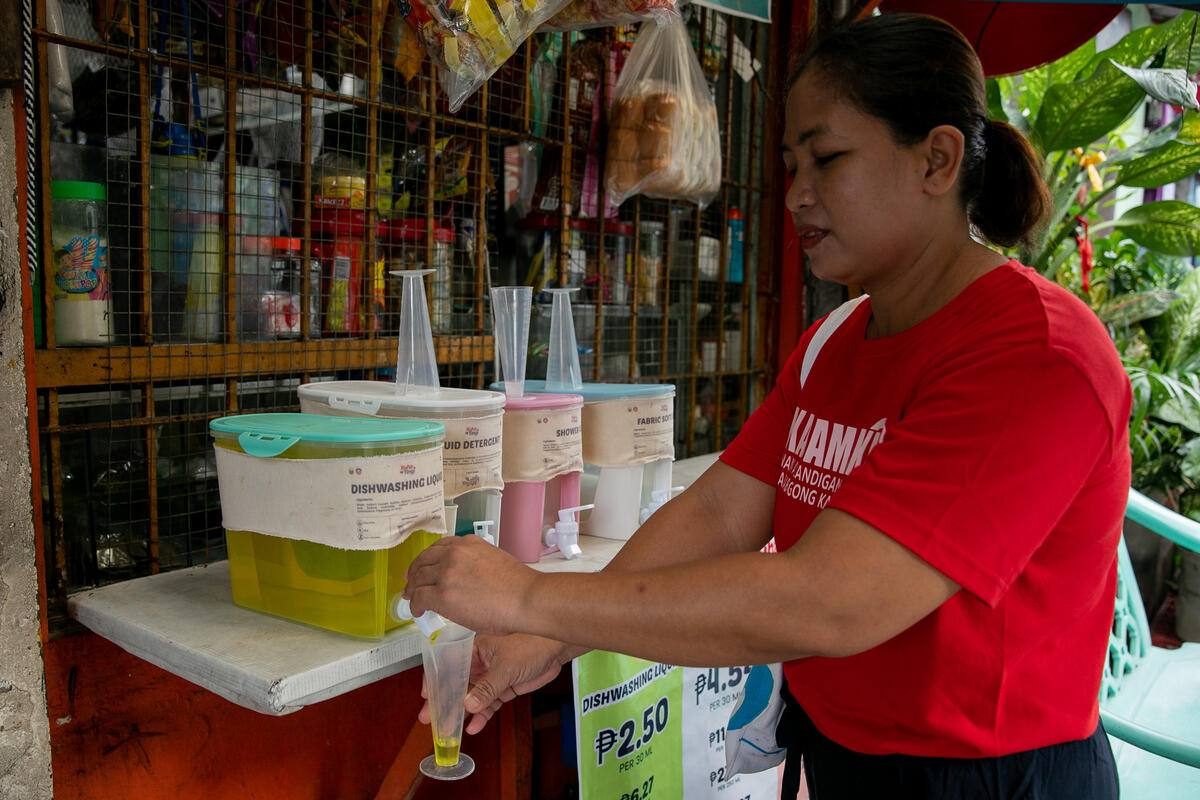
MANILA, Philippines – Installing refill systems in small stores are a win-win solution for both owners and consumers, said a recent report from environmental organization Greenpeace Philippines.
The report, launched on Friday, March 22, gathered data from selected sari-sari stores in San Juan and Quezon City that implemented the refill system.
This system included refillables with dishwashing liquid, laundry detergent, fabric conditioner, shower gel, and multipurpose cleaner, either with a pump or faucet design.
The report said store owners can expect 15% profit increase when selling these household necessities with a refill system, while consumers can expect up to 201% increase in savings.
“This is a business model that is a win-win solution for everybody,” said Quezon City (QC) Mayor Joy Belmonte in Filipino during the report launch on Friday. “Retailers profit more, consumers can save up. But most importantly, conducting business this way does not harm the environment.”
In Quezon City, 30 sari-sari stores adopted the refill system in July 2023. After six months, 24 of the stores have been found to still continue the initiative. The Quezon City government has already expanded the campaign to 1,000 stores.
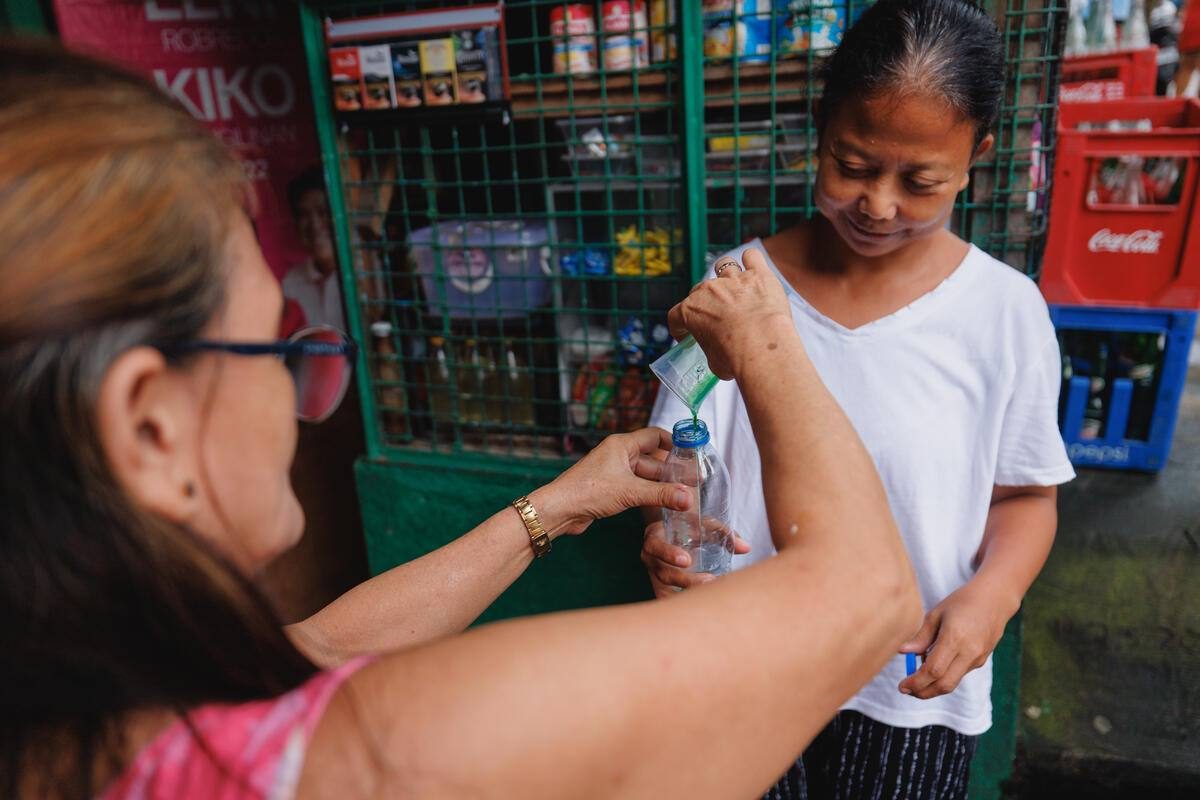
Belmonte said they are aiming to expand from 5,000 up to 6,000 stores within the year if the initial 1,000 prove successful.
>>> According to Belmonte, they are gunning for expansion from 5,000 up to 6,000 stores within the year if the initial 1,000 prove successful.
The QC mayor said the data from the initial implementation in two Metro Manila cities are proof that people are willing to adopt environment-friendly alternatives if these are affordable and convenient. Belmonte added that local government leaders are in a crucial position to jump-start the implementation of these kinds of environment-friendly initiatives at the local level.
The campaign was first launched in San Juan back in November 2022, where 10 stores, including an employee’s cooperative, implemented the refilling system.
Changing plastic culture
“Hindi Filipino culture ang sachet,” said Lea Guerrero, country director of Greenpeace Philippines, on Friday. Instead, the culture is tingi or piecemeal. (Sachets are not part of the Filipino culture.)
Beside competitive prices that benefit both sellers and buyers, the refilling system can help cut down plastic packaging at least at the local levels.
According to the report, more than 50,000 sachets were displaced because of the refilling systems in San Juan and Quezon City.
More than 460 million tons of plastic are produced worldwide, according to Organization for Economic Co-operation and Development (OECD). The OECD said plastic production doubled in the last two decades. Plastic is used in most industries and account for 3.4% of global greenhouse gas emissions.
Because it takes thousands of years before they’re disposed, they get stuck in the environment, and even make its way to humans’ guts through seafood that have ingested micro plastics.
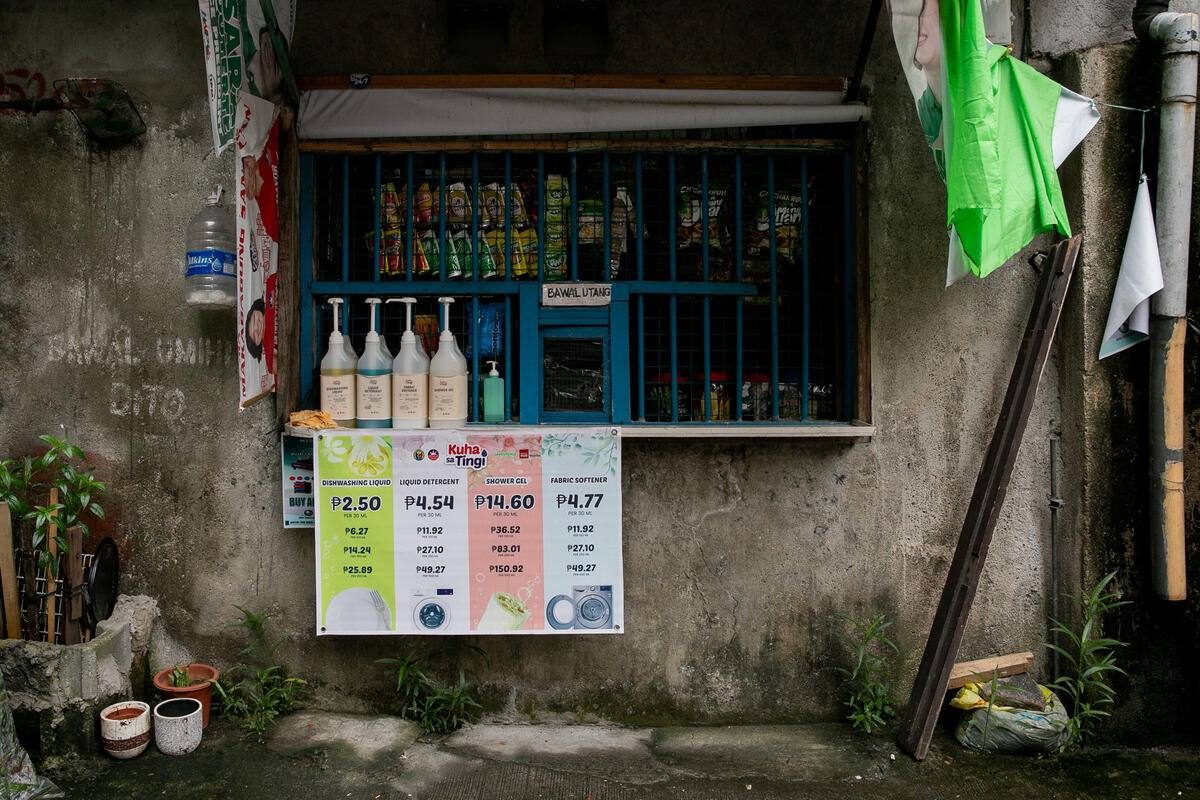
The refill system is one way to change lifestyle and consumption behaviors of people. It is a solution that proves “we don’t have to live with plastic pollution,” said Guerrero.
They are hopeful that the pilot cities could pave way to bigger scale. Quezon City’s rollout of the refill system to 1,000 stores could avoid 1,066,666 sachets monthly, or 12,799,992 sachets annually, according to the report.
Meanwhile, with this scenario, Quezon City retailers are set to profit at least P1,800 a month and consumers can save P400 a month.
A better system
Completely eliminating the use of plastics depends heavily on producers. The refill system only addresses a part of the chain that involves small business owners and consumers.
The Extended Producer Responsibility (EPR) lapsed into law in 2022, amending the Ecological Solid Waste Management Act of 2000. It aims to hold large product producers, accountable for the plastic waste they put out. (READ: Everything you need to know about the Philippines’ Extended Producer Responsibility law)
However, the EPR falls short of this objective, advocates said, as it focuses on collection of waste rather than reduction.
“With unregulated mass production of disposable plastics, the systematic dismantling of existing reuse models, and the glaring lack of new reuse and refill systems, the current status quo perpetrated by plastic producers has led to adverse impacts on ecosystems and health,” the report read.
Beside reuse and refill systems, environmental advocates say the government must invest in more solutions that cut the problem from the source. This includes a total ban of single-use plastics, phase down in plastic production.
“Corporations must change the way they do business and enact widespread systemic changes on what materials they rely on, as well as their product delivery systems,” the report said. – Rappler.com
(Editor’s note: An earlier version of this story suggested store owners could expect a 200% profit margin and consumers could save 150-200% with a refill system. The corrected version accurately reflects that store owners can anticipate a 15% profit increase, while consumers can save up to 201% on their usual expenses.)
Add a comment
How does this make you feel?

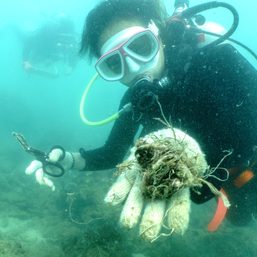
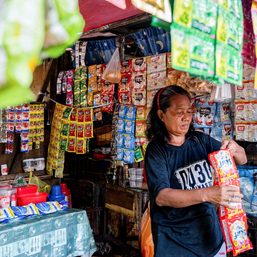
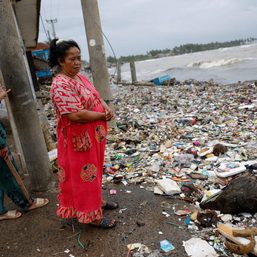
![[The Wide Shot] The public stoning of Boy Dila](https://www.rappler.com/tachyon/2024/07/TL-boy-dila-july-6-2024.jpg?resize=257%2C257&crop=271px%2C1px%2C721px%2C719px)







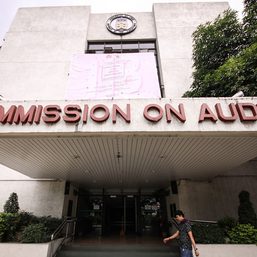
There are no comments yet. Add your comment to start the conversation.